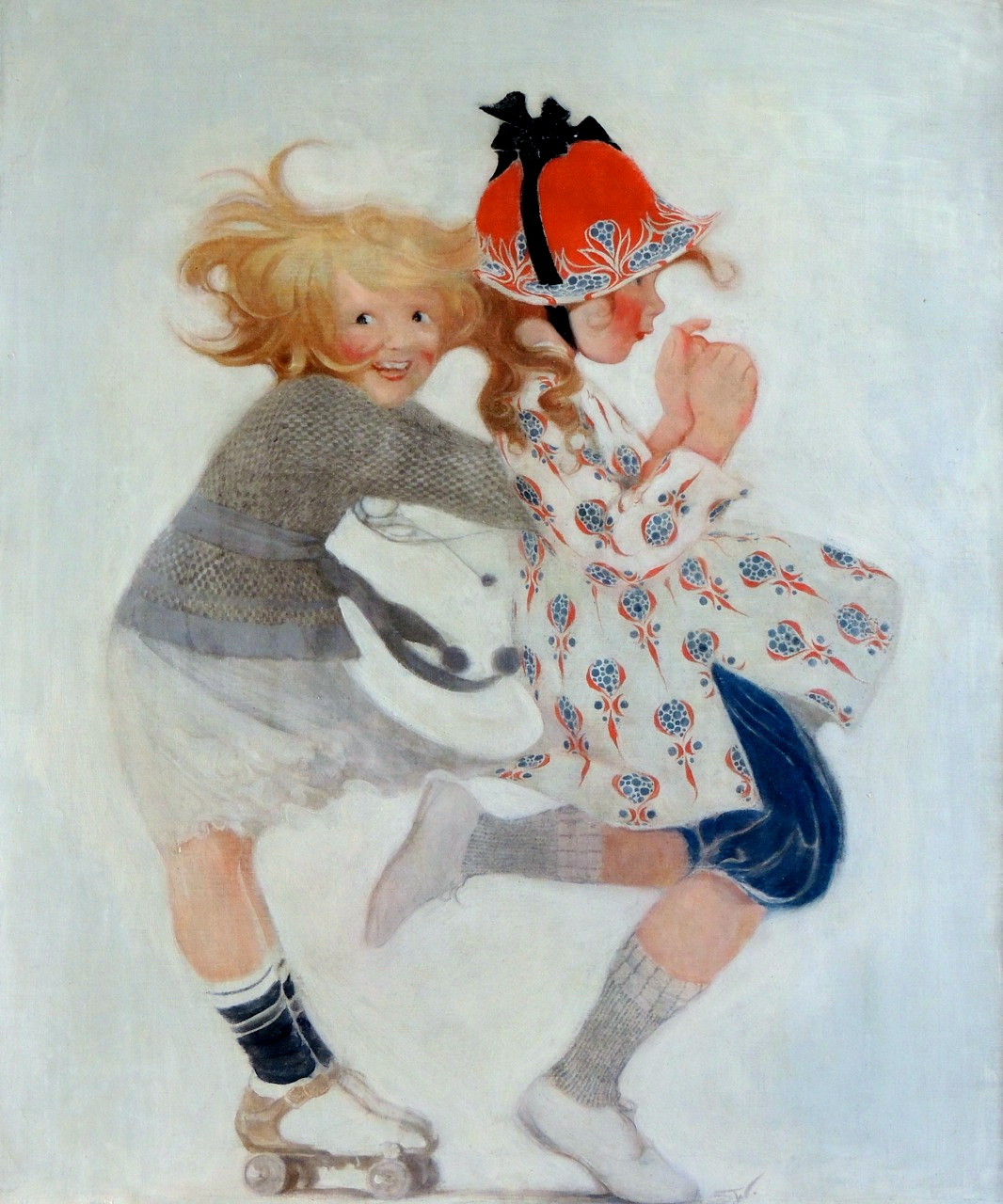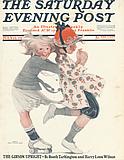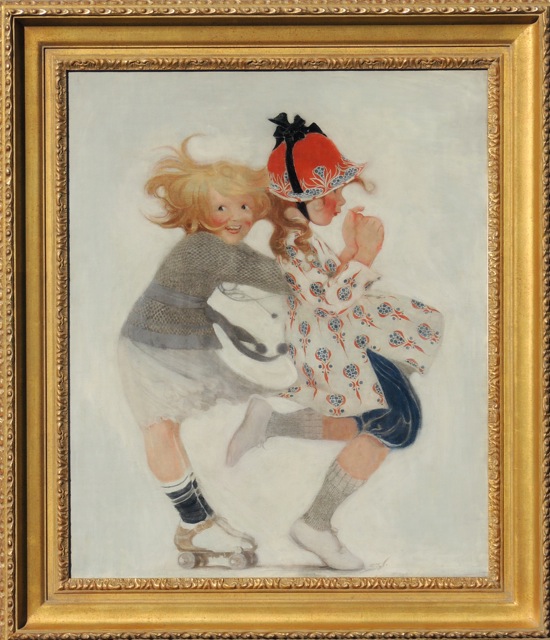"Roller-skating, Saturday Evening Post Cover, July 12, 1919" Lot no. 2019
By Sarah S. Stilwell Weber 1878-1939
1919
30.00" x 25.00", Framed 39.00" x 34.00"
Oil on Canvas
Signed Lower Right
REQUEST PRICE
PURCHASE REQUEST
Original cover for The Saturday Evening Post, July 12, 1919.
Sarah S. Stilwell-Weber was known for her illustrations of children. After the birth of her daughter Jane in 1909, Stilwell-Weber’s work matured. She took children out of the realm of fantasy and focused on active images of children at play in the real world, putting them in settings like the seashore or the park. Roller-skating instantly grabs the attention of the viewer with its strong sense of movement of the two little girls, coupled with the pure joy of the subject.
Sarah S. Stilwell was born in 1878 in Concordville, Pennsylvania, the youngest daughter to a harness maker. She started taking art classes at the Drexel Institute at age 17 in 1897 with Howard Pyle, who is considered the “father of American illustration” and who taught many of the most successful illustrators. Stilwell sold her first illustration to Collier’s in 1898, the same year she illustrated her first book, Dorothy Dean. The following year, she earned a coveted spot to study with an exclusive group of Pyle’s students at Chadd’s Ford. She studied with him until 1900, then set up an independent studio to work in Delaware, close to her mentor.
She received a steady stream of commissions, including in 1903 a pictorial essay for St. Nicholas magazine with 6 drawings of children on the theme of “Happy Days,” which helped launch her career and gained her commissions for leading publications like Vogue, Harper’s Bazaar, and The Post, for which she would produce her first cover in 1904.
Stilwell-Weber’s Post covers became so popular that the editor in chief, George Lorimer, offered her a contract for a regular slot on the cover - a role which would later be given to Leyendecker and Rockwell. But, Stilwell-Weber turned it down. She wasn’t sure she could produce the kind of quality work she wanted on a fixed schedule, though she would go on to paint 60 covers for the Post.
Once she established herself as a professional illustrator, she moved to Philadelphia where she joined the Plastic Club, an arts club for women established by earlier graduates of Pyle’s school, including Jessie Willcox Smith, Elizabeth Shippen Green and Violet Oakley.
Pyle accepted women in his class, but demanded full commitment from them. He encouraged his female students to never marry, for he thought if they married and had children they could never hope to keep up with the deadlines and high-standards of an illustration career. But, unlike her peers like Jessie Willcox Smith who had followed Pyle’s advice and never married, Sarah S. Stilwell married an English teacher named Herbert Weber in 1908 and the couple had their daughter the following year.
By this time in 1909, Stilwell-Weber was among the highest paid illustrators in the country and was painting covers for The Saturday Evening Post, which had a circulation of around 2 million by this time.
Explore related art collections: $100,000 & Above / Women Artists / Brandywine School / Saturday Evening Post Covers / Children / Magazine Covers / 1910s / Fashion / Sports
See all original artwork by Sarah S. Stilwell Weber
ABOUT THE ARTIST
Sarah S. Stiwell Weber was fortunate as a student to attend the Drexel Institute in Philadelphia at the time Howard Pyle conducted his illustration class there (1894-1900). She also attended his summer classes at Chadds Ford, Pennsylvania.
Although Pyle’s influence is clearly evident in her work, her point of view was often highly imaginative and exotic; she did fairy tales about or for children particularly well. Her pictures were well adapted to books, and in addition to such magazines as Harper’s, Bazar, Collier’s, St. Nicholas and The Saturday Evening Post, she illustrated a number of children’s books. She also wrote and illustrated a song book, The Musical Tree.
Stilwell also worked in collaboration with Howard Pyle in illustrating his The Angel and The Child in sensitive pen-and-ink drawings, as well as with Katherine Pyle (Howard Pyle’s sister) illustrating her book Childhood and verse published in Harper’s Bazar. Among her many advertising clients were Wamsutta Mills, Kiddie-Kar, Fleishman’s Yeast, H-O Oats, Scranton Lace Company, Rit Dyes, and Williams’ Talc Powder.





